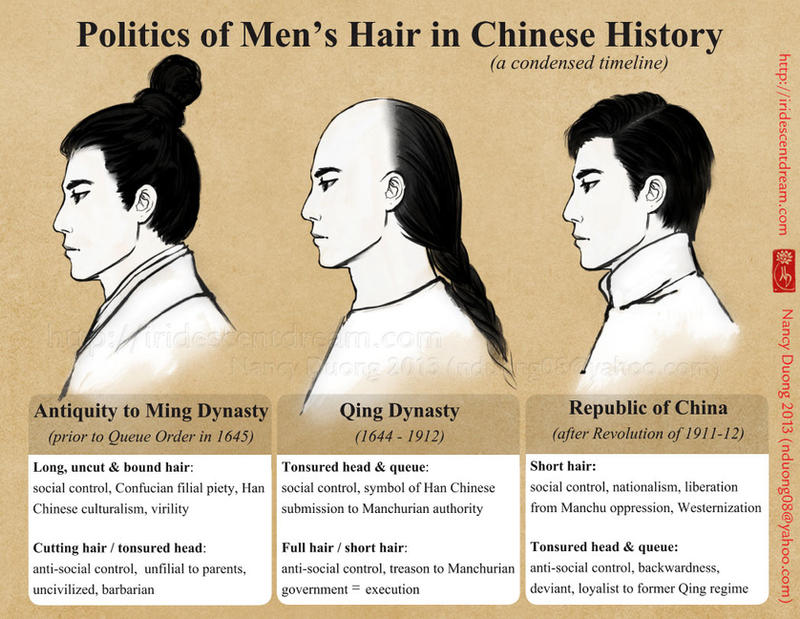Some historical references for Practical Immortality fic
Lu Han (盧翰) was an official of the Chinese dynasty Tang Dynasty, serving as a chancellor during the reign of Emperor Dezong.
Very little is known about Lu Han's background, and his date of birth is not known, as, contrary to the case with most other Tang chancellors, there was no biography of him
Few of his acts were recorded in history
Lu Han was removed from his chancellor post and made an advisor to Emperor Dezong's crown prince Li Song.That was the last historical record regarding Lu in history, and it is not known when he died.


Pien Fu (Chinese: 弁服; pinyin: biànfú) is a traditional Chinese outfit consisting of a knee-length tunic over a skirt or pair of pants. This two-piece costume was considered to be a ceremonial dress.
The tunic for a top that extended all the way to the knees. This was worn on top of a skirt that reached the length of the ankles. The skirt under the tunic was worn only during formal occasions. The pien (弁) was a cylinder-shaped hat that accommodated the outfit.
White白 (bái) — symbolizing bereavement, bad luck, death, failure and stupidity
Since time immemorial, white has been the dominant color displayed at Chinese funerals, the so-called “白事 (báishi)”, literally, white affairs, while those of lower intelligence, more colloquially known as idiots, are referred to as “白痴(báichī)”.
Red 红 (hóng) — symbolizing enthusiasm, fervor, and luck
During a traditional Chinese wedding, it is considered auspicious for the bride and bridegroom to dress in red, in anticipation of a blissful, argument-free union. Red lanterns, red couplets and red papercuts blanketed with the Chinese character “喜(xǐ, bliss)” are ubiquitous. Red even makes its way into the lexicon in a term used for female matchmakers, “红娘 (hóngniáng)”, literally, Red Ladies.
Yellow 黄 (huáng) — symbolizing royalty, solemnity and sacredness
The dragon robe, the official garb of the feudal emperor in Chinese society, is yellow, and the color’s symbolism extends to representing imperial power and sovereignty
Black 黑 (hēi) — symbolizing sublimity, equality, righteousness, and solemnity
In traditional Chinese plays and dramas, actors whose faces are painted black are playing the role of righteous and just characters. “包拯 (bāozhēng)”, renowned as the most impartial judge in Chinese history and a frequent , is easily recognized by his black face
Green 绿 (Lǜ) — symbolizing life, peace, vitality, and youth
blue = immortality
brown = industrious, grounded
orange = change, adaptability
pink = love
purple = spiritual awareness
The Daming Palace ("Palace of Great Brilliance") was the imperial palace complex of the Tang Dynasty
Beginning from the south and ending in the north, on the central axis, stand the Hanyuan Hall, the Xuanzheng Hall, and the Zichen Hall.These halls were historically known as the "Three Great Halls" and were respectively part of the outer, middle, and inner court. The central southern entrance of the Daming Palace is the Danfeng Gate. The gate consisted of five doorways.
The Hanyuan Hall, where many state ceremonies were conducted, would serve as the main hall for hosting foreign ambassadors during diplomatic exchanges
The Xuanzheng Hall is located at a distance of about 300 meters north of the Hanyuan Hall.State affairs were usually conducted in this hall. The office of the secretariat was located to the west of the Xuanzheng Hall and the office of the chancellery was located to the east
The Zichen Hall, located in the inner court, is approximately 95 meters north of the Xuanzheng Hall. It housed the central government offices. For officials, it was considered a great honor to be summoned to the Zichen Hall
Comments